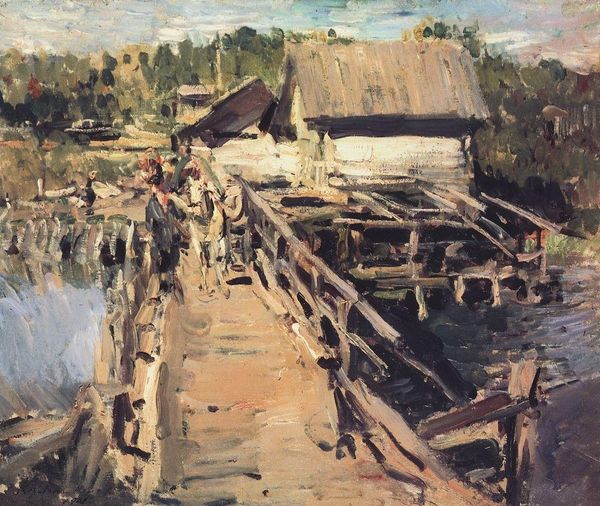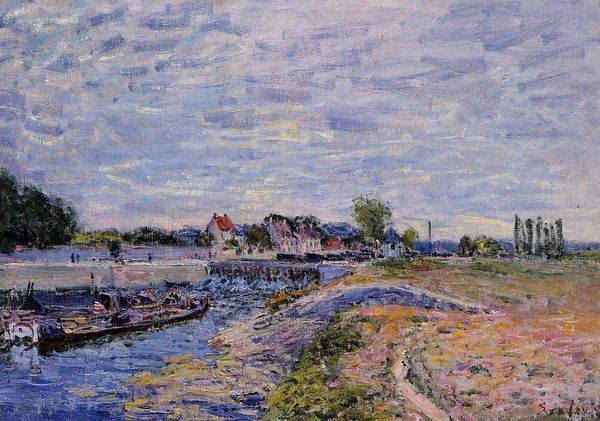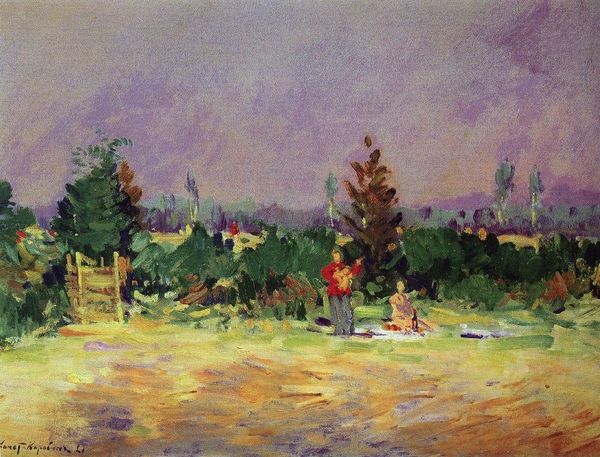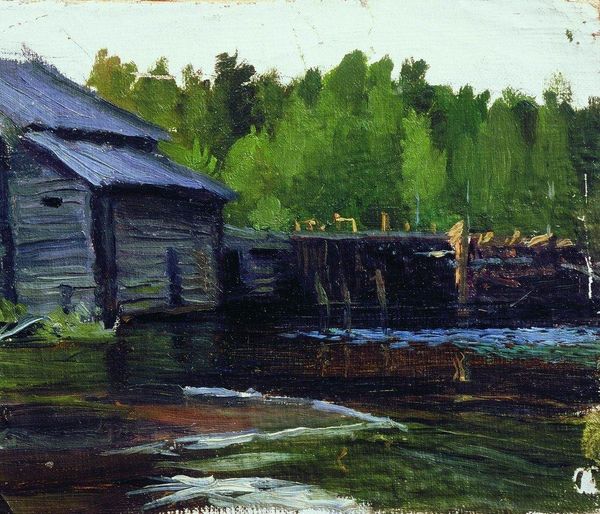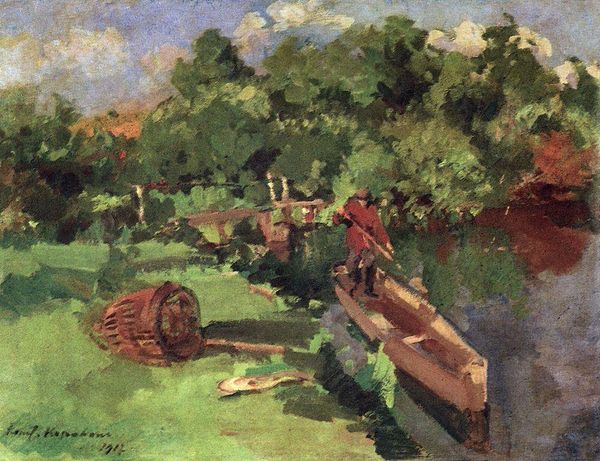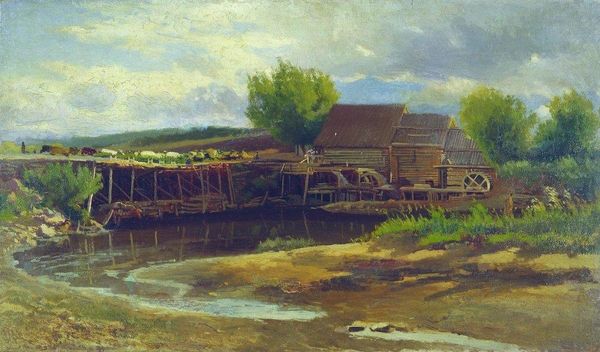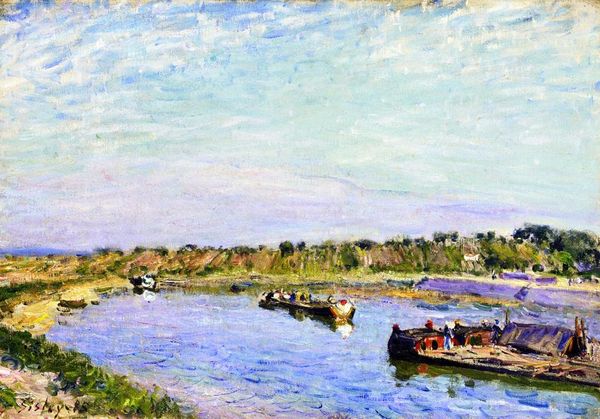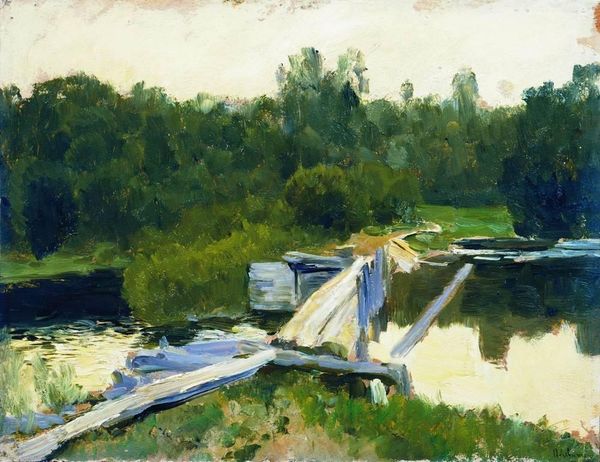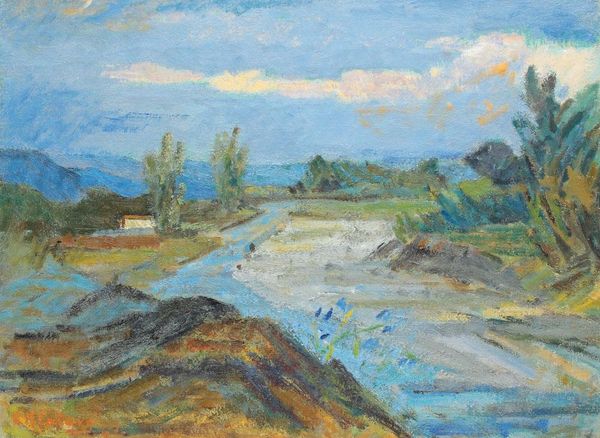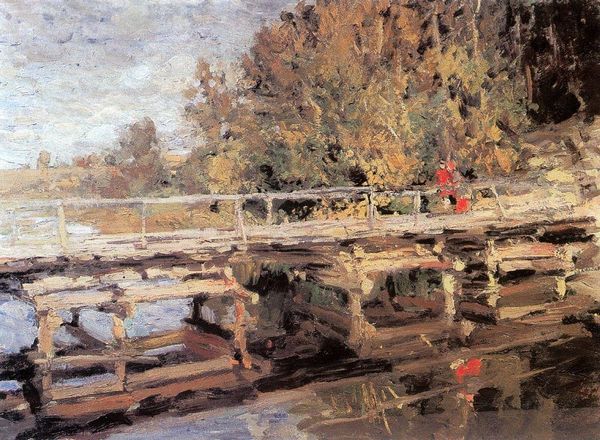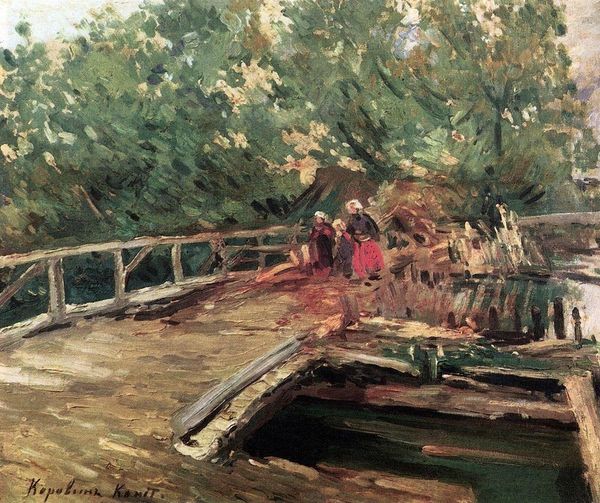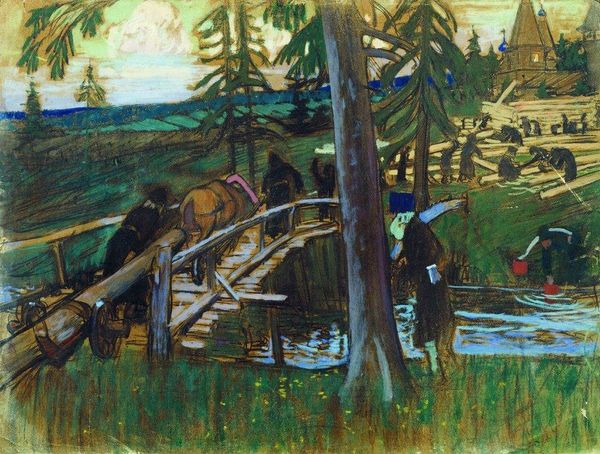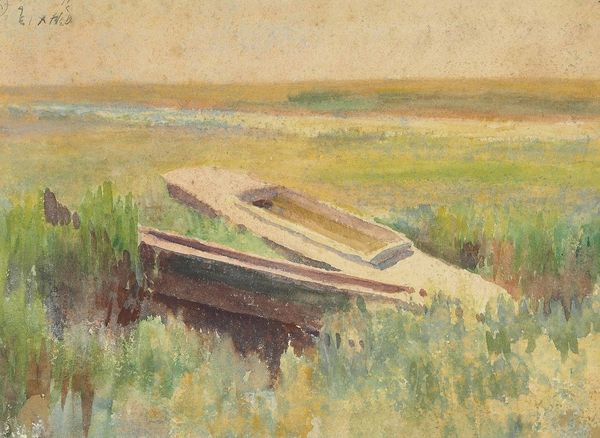
Copyright: Public domain
Curator: Look at how the late Impressionist painter Konstantin Korovin captures a transient moment in his 1917 painting, "At the Pool." Korovin's work is deeply embedded in the sociopolitical context of a Russia teetering on the brink of revolution. Editor: It evokes such stillness. The blues and greens are restful. There’s a feeling of cool water, reflecting a hazy sky. It makes me feel calm, but also a bit melancholic, like a memory fading at the edges. Curator: That fading feeling might be rooted in the historical moment, the anxieties surrounding World War I and the brewing revolution, reflected perhaps in the seemingly dilapidated structure of that footbridge and the distant building that looms in the background. Editor: It’s interesting that you focus on those signs of decay. To me, the ramshackle bridge also symbolizes resilience—the resourcefulness of rural life making do with what’s available. The bridge as a symbol connecting the past and the future and hinting a possibility that can overcome challenges. Curator: I agree. Considering his association with the Russian avant-garde movement, that theme of transformation feels intentional. Korovin’s artistic exploration extends beyond the purely aesthetic. In viewing, one must explore the tension between tradition and impending change. Editor: You can also read so much into the recurring motif of water – always a symbol of change, purification, or the unconscious. Here, the reflective quality makes us consider inner landscapes as much as the external world. Even the indistinct figures lurking on the bridge seem submerged, as though fading into their reflections. Curator: The application of oil paint here feels urgent and gestural, especially given what was happening politically at the time in 1917, and his commitment to *plein air* underscores his determination to confront immediate realities of a Russia engulfed in political and social crisis. Editor: Ultimately, Korovin prompts us to consider the layered nature of tranquility – its inherent impermanence, but also its capacity to endure even when standing as an emotional connection across turbulent historical periods. Curator: It really does ask us how we confront those complexities, both within and outside of ourselves. Editor: I find this contemplation very rewarding.
Comments
No comments
Be the first to comment and join the conversation on the ultimate creative platform.
